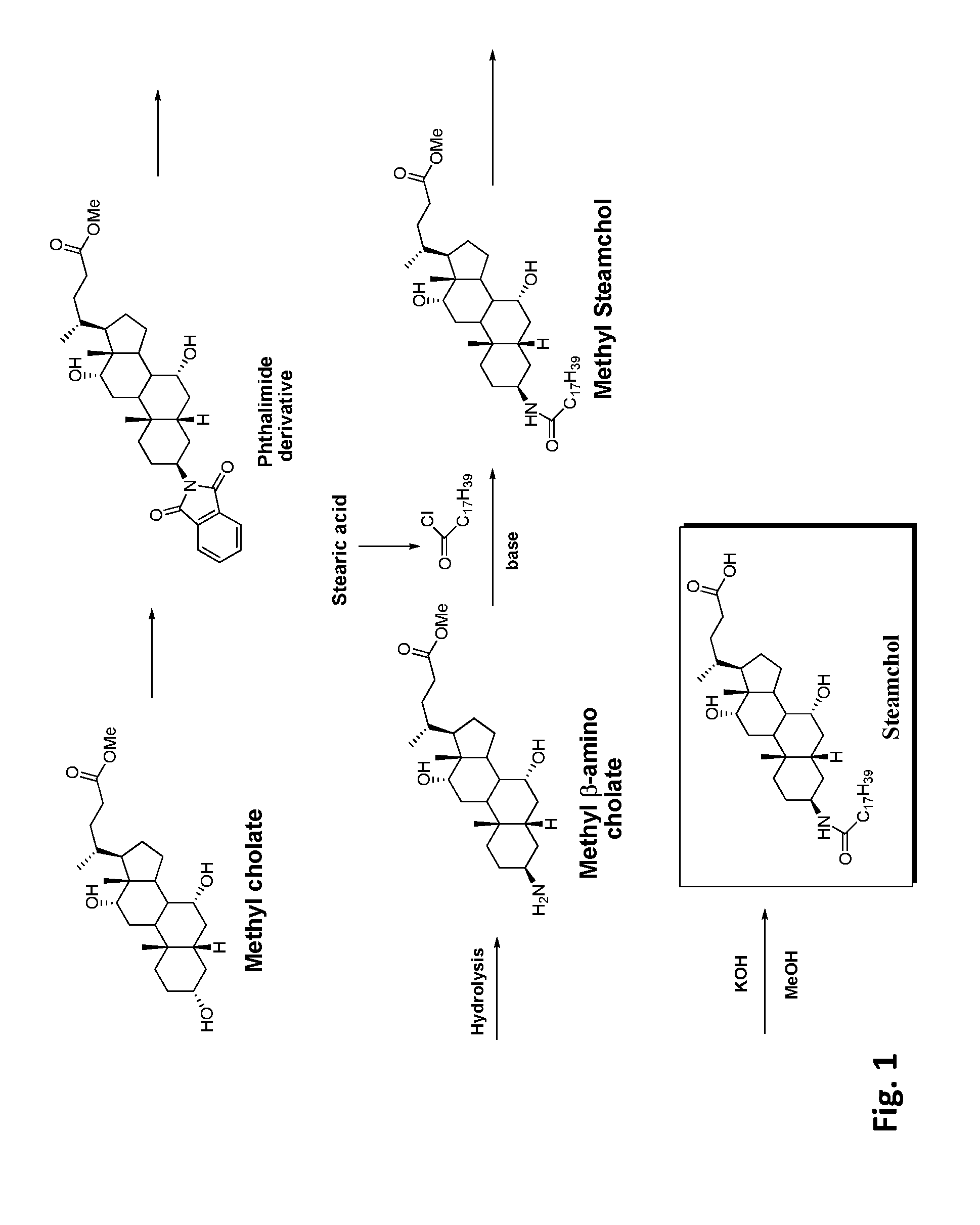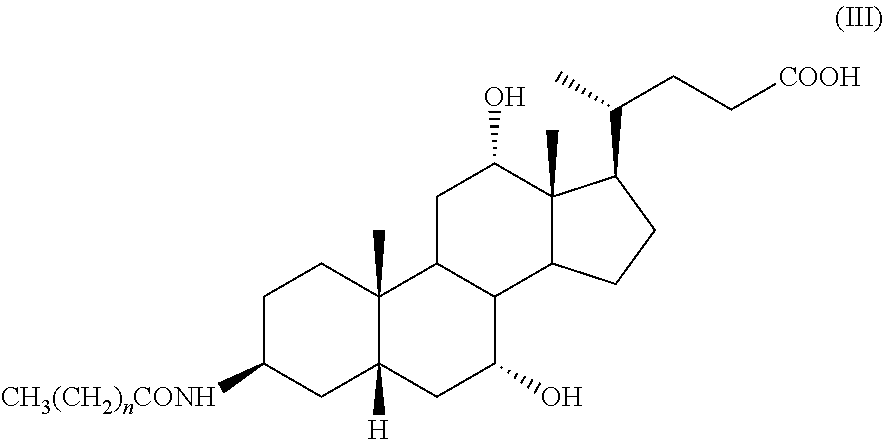Anti-aging compositions comprising bile acid-fatty acid conjugates
a technology of bile acid and conjugates, which is applied in the field of topical compositions comprising bile acidfatty acid conjugates, can solve the problems of skin being constantly insulted, uneven texture and scattered pigmentation, uneven skin thickness, etc., and achieves the effects of enhancing the transport activity of abca1 protein, reducing the risk of skin aging, and recovering from cholesterol depletion
- Summary
- Abstract
- Description
- Claims
- Application Information
AI Technical Summary
Benefits of technology
Problems solved by technology
Method used
Image
Examples
example 1
Cytotoxicity Assay Study Overview
[0149]Full-thickness Epiderm cultures (EFT-400, MatTek) were used to determine toxicity in response to topical application of a test material (Steamchol). A previous viability assay was conducted at concentrations of 40.0, 13.3, 4.4, 1.5 ug / mL and vehicle alone (DMSO); no toxicity was observed.
[0150]Experimental Procedures
[0151]The test material was provided as a powder. Test solutions were prepared by adding the appropriate amount of powdered material to 1 mL DMSO. Lower concentrations were made by serial dilution with 100% DMSO. The final test material concentrations and treatments are listed below:[0152]2% Steamchol (20,000 ug / mL)[0153]1% Steamchol (10,000 ug / mL)[0154]0.1% Steamchol (1000 ug / mL)[0155]0.01% Steamchol (100 ug / mL)[0156]vehicle control (100% DMSO)[0157]untreated control
[0158]Full-thickness skin cultures (EFT-400) were maintained as required to ensure viability; the cultures were equilibrated at 37° C. and 5% CO2 for 24 hours prior to ...
example 2
Effect of Steamchol or Aramchol on Cholesterol Efflux and ABCA1 mRNA and Protein Levels
[0161]Steamchol was incubated with human skin fibroblasts for 20 hours to measure cholesterol loading in the presence of [3H] cholesterol. After series of washing and adding efflux containing cholesterol acceptors, medium was collected and centrifuged and cell associated cholesterol was compared to effluxed cholesterol in the presence and absence of the similar FABAC. This research project also included quantification of mRNA of ABCA1 and direct measurement of ABCA1. Results demonstrated that cholesterol efflux in fibroblasts was significantly enhanced and that ABCA1 protein concentration increased approximately 2 fold when efflux took place in the presence of FABAC as compared to untreated cells.
[0162]Similarly, cells were pre-incubated with [3H] cholesterol, washed four times and then placed in an incubation medium with or without Aramchol for 20 hours. Following the incubation, radioactivity wa...
example 3
Effect of Steamchol on Gene Expression in Skin Culture
[0163]A full-thickness in vitro skin culture model, Epiderm FT (MatTek, MA), was treated with Steamchol. Steamchol in DMSO (0.5%, 5000 ug / mL) was applied to the surface of each test culture and cells were collected 24 hours post-application. Control cells were similarly treated with DMSO without Steamchol.
[0164]Tissues were collected in RNA later for gene expression analysis. Gene expression was analyzed using validated Taqman gene expression assays in Taqman Low Density Array (TLDA) format. 94 genes that regulate a variety of known functions in skin were analyzed including the ABCA1 and SCD1 genes. The experimental set up was conducted in a 96-well format using validated Taqman gene expression assays. Each gene was assayed in duplicates. Statistics were carried out using the StatMiner software v4.2 (unpaired t-tests, p≦0.05, N=4) to compare the Steamchol group to the DMSO control group.
[0165]The effect of Steamchol on gene expre...
PUM
 Login to View More
Login to View More Abstract
Description
Claims
Application Information
 Login to View More
Login to View More - R&D
- Intellectual Property
- Life Sciences
- Materials
- Tech Scout
- Unparalleled Data Quality
- Higher Quality Content
- 60% Fewer Hallucinations
Browse by: Latest US Patents, China's latest patents, Technical Efficacy Thesaurus, Application Domain, Technology Topic, Popular Technical Reports.
© 2025 PatSnap. All rights reserved.Legal|Privacy policy|Modern Slavery Act Transparency Statement|Sitemap|About US| Contact US: help@patsnap.com



